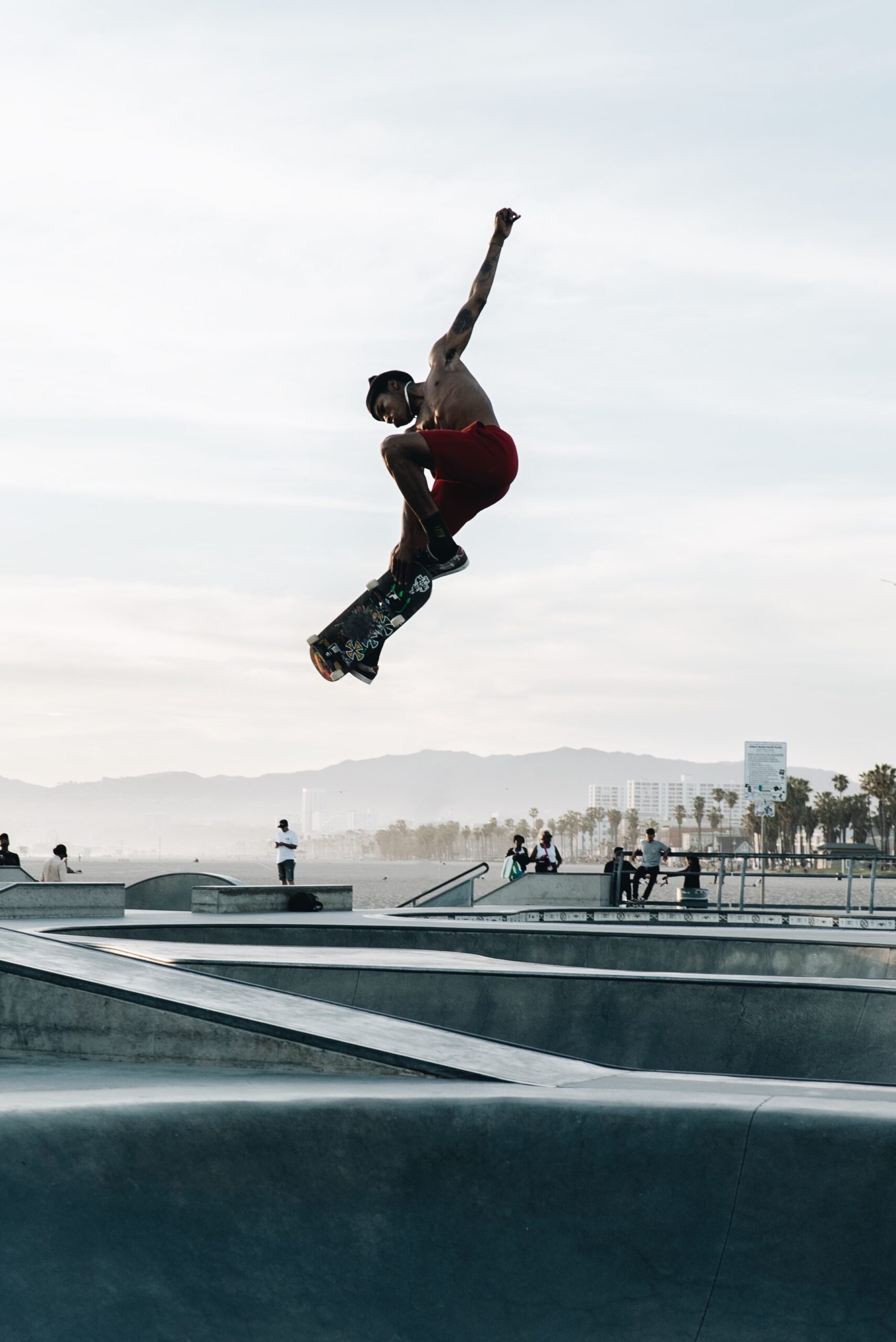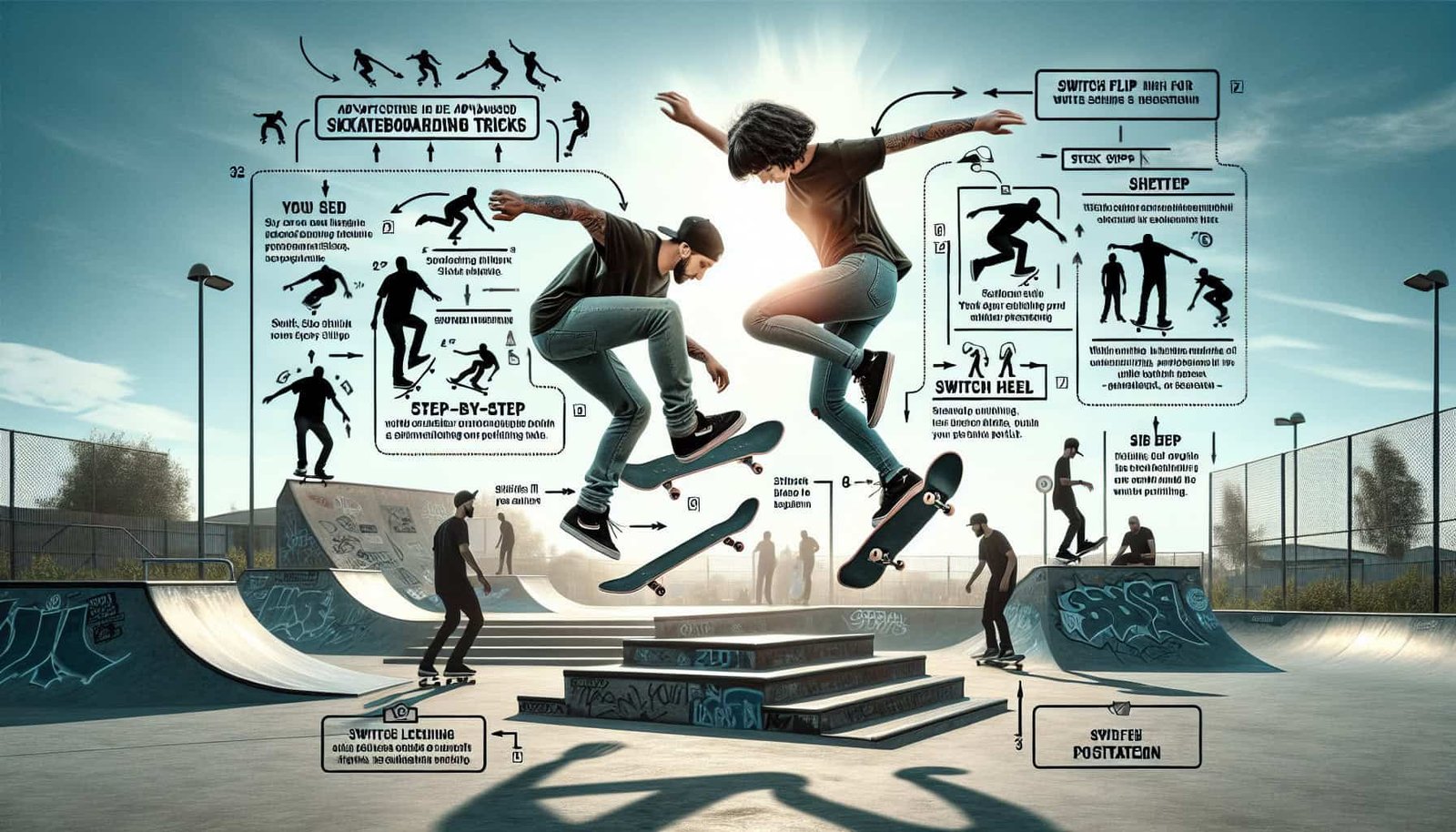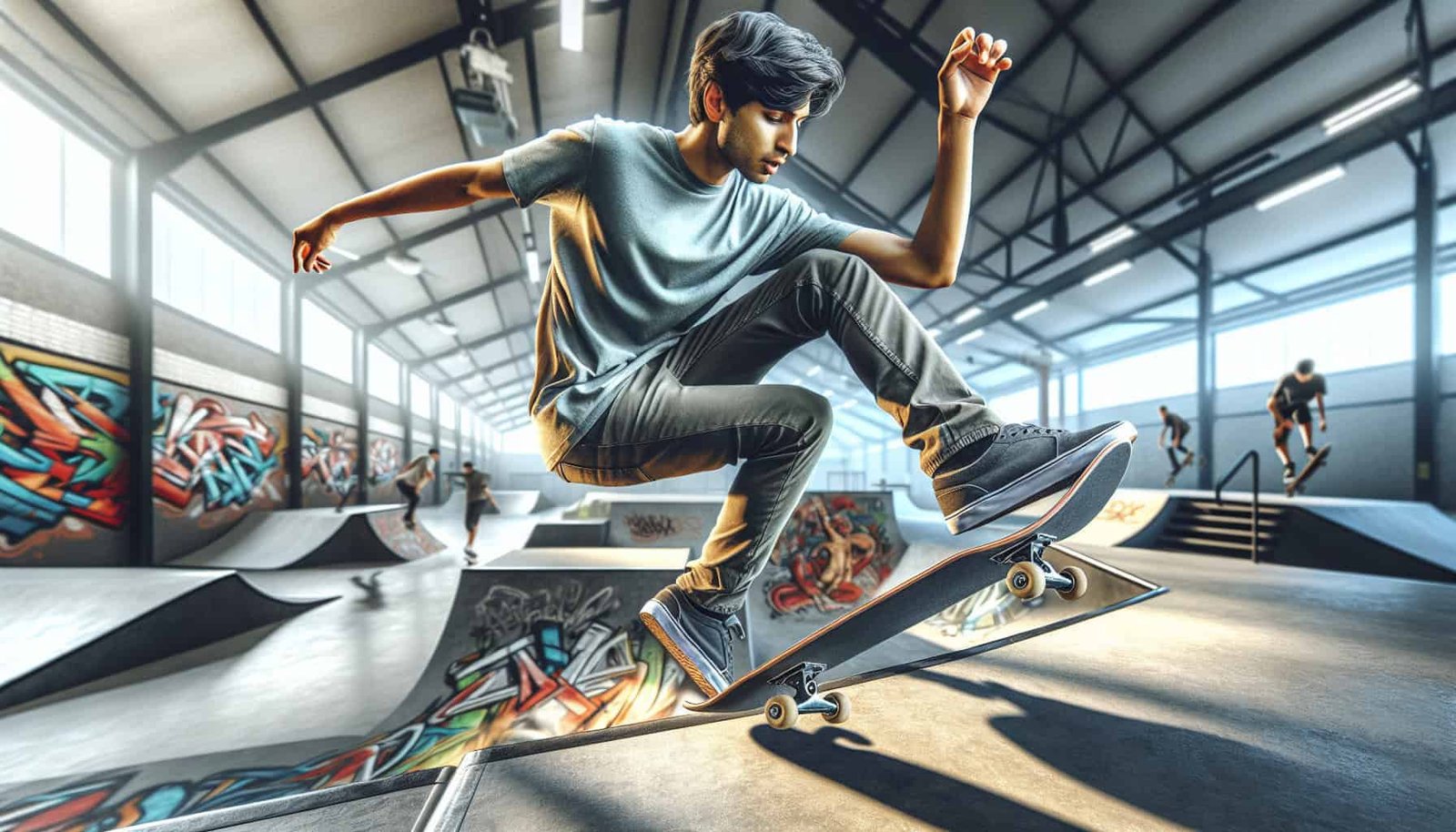So, you’re ready to take your skateboarding skills to the next level? Well, look no further because in this article, we will show you exactly how to master the elusive skateboard switch flips and switch heels. Whether you’re a beginner or a seasoned skater looking to add some new tricks to your repertoire, we’ve got you covered. Get ready to flip and twist your board like a pro as we break down the steps to mastering these impressive moves. Get your board out and let’s get started!
Understanding Switch Flips
Definition of a switch flip
Switch flips are a skateboarding trick where the skater pops the board with the opposite foot and flicks it with the other foot to perform a kickflip while riding in the switch stance. In the switch stance, the skater’s non-dominant foot is placed at the front of the board, and the dominant foot is at the back.
Importance of learning switch flips
Learning how to do switch flips is essential for any skateboarder looking to progress their skills. Switch flips not only add variety to your trick repertoire, but they also improve your overall balance, coordination, and board control. Mastering switch flips can enhance your ability to switch between regular and switch stances seamlessly, allowing you to tackle a wider range of obstacles and tricks.
Difference between regular and switch flips
The fundamental difference between regular and switch flips lies in the foot positioning and the direction of the skateboard rotation. Regular flips are performed with the skater’s dominant foot at the back of the board, while switch flips are executed with the non-dominant foot at the back. The rotation direction for regular flips is counter-clockwise, whereas for switch flips, it is clockwise. This distinction makes switch flips more challenging as they require using the opposite foot for flicking and controlling the board.
Getting Started with Switch Flips
Developing a solid foundation
Before diving into switch flips, it’s crucial to have a strong foundation in skateboarding basics. Familiarize yourself with regular tricks like ollies, kickflips, and heelflips to ensure that you have a solid understanding of skateboard mechanics and board control. Building a solid foundation will make it easier to transition into switch tricks.
Practicing stationary switch flips
Begin by practicing switch flips while stationary. Stand with your non-dominant foot at the front of the board and your dominant foot at the back. Focus on getting comfortable with the foot placement and getting a feel for how the board reacts when you flick it with your non-dominant foot. Start by attempting small, controlled switch flips, gradually increasing the height and rotation as you gain confidence.
Working on switch ollies
Mastering switch ollies is an essential step towards learning switch flips. Practice popping the board with your non-dominant foot and sliding your dominant foot towards the nose of the board while in the switch stance. Focus on getting a smooth pop and a clean slide to ensure proper technique. Developing a solid switch ollie will provide the foundation for executing switch flips with ease.

Perfecting Switch Flips
Foot placement for switch flips
Proper foot placement is crucial for executing switch flips efficiently. Ensure that your non-dominant foot is positioned slightly behind the front bolts and your dominant foot is at the back, similar to the regular stance. This positioning allows for better control and stability throughout the trick.
Using your shoulders and hips
When performing switch flips, it’s important to engage your shoulders and hips to generate the necessary rotation. As you pop the board and flick with your non-dominant foot, twist your shoulders and hips in the direction of the rotation. This motion helps initiate and control the flip, resulting in a cleaner and more controlled switch flip.
Committing to the trick
Commitment is key when it comes to switch flips. It’s natural to feel apprehensive about committing to the trick, especially when using the opposite foot for flipping. However, fear can hinder progress. Trust yourself and fully commit to the trick by following through with the motion and staying focused. With practice, your confidence will grow, making it easier to land those switch flips consistently.
Switch Heel Basics
Definition of a switch heel
A switch heel is a skateboarding trick where the skater performs a heelflip while in the switch stance. Similar to switch flips, a switch heel involves using the non-dominant foot for popping the board and the dominant foot for flipping and controlling the board. The board rotates in the opposite direction compared to regular heelflips.
Benefits of learning switch heels
Learning switch heels can significantly improve your skateboarding skills. Not only do switch heels add diversity and complexity to your trick repertoire, but they also enhance your overall balance, coordination, and footwork. Mastering switch heels allows you to approach obstacles and perform tricks from different angles, providing a fresh perspective and expanding your creative possibilities on the skateboard.
Challenges involved in switch heels
Switch heels can be particularly challenging due to the coordination required to execute the trick with the opposite foot. Since the non-dominant foot is responsible for popping the board, it may initially feel awkward and less controlled. Additionally, timing the flip with the dominant foot can be tricky, as the motion is reversed compared to regular heelflips. However, with practice and perseverance, these challenges can be overcome.

Building Skills for Switch Heels
Mastering switch ollies
Before attempting switch heels, it’s essential to have a solid switch ollie. Practice popping the board and sliding your dominant foot to the tail while in the switch stance. Focus on getting a clean pop, a level slide, and a controlled landing. Developing a strong switch ollie will provide a stable foundation for performing switch heels.
Improving balance and stability
Balance and stability are crucial for executing switch heels successfully. Work on improving your overall balance by practicing one-footed exercises, such as standing on one foot while maintaining your stability. This helps develop the necessary muscle control and proprioception needed for switch heels.
Enhancing board control
Building confidence in controlling the board is vital for executing switch heels. Practice riding switch and performing simple maneuvers like turns, carves, and manuals. This will enhance your ability to navigate the board while in the switch stance, making it easier to execute the flipping and scooping motions required for switch heels.
Learning the Switch Heel Motion
Foot positioning for switch heels
Proper foot positioning is essential for executing switch heels effectively. Place your non-dominant foot slightly behind the front bolts and your dominant foot at the back, similar to the regular stance. This positioning allows for better control and stability throughout the trick. Keep your front foot angled slightly towards the heel edge of the board to facilitate the heelflip motion.
Understanding the flick
The flick is a crucial component of switch heels. When flipping the board, use the outside edge of your dominant foot to initiate the heelflip motion, kicking off the edge of the board just below the front bolts. Aim to flick with a slight upwards and outwards motion, allowing the board to rotate beneath you. Practice flicking with consistency and accuracy to achieve the desired rotation in your switch heels.
Training muscle memory
Switch heels require muscle memory to perform smoothly and consistently. Repetition is key to developing muscle memory, so dedicate time to consistent practice. Focus on executing the proper foot placement, flick, and board control repeatedly until the motion becomes ingrained. Muscle memory will allow you to execute switch heels more fluidly, ultimately leading to cleaner and more controlled tricks.

Practicing Switch Flips and Switch Heels
Setting up a proper practice routine
To improve switch flips and switch heels, establish a dedicated practice routine. Allocate specific time slots for practicing these tricks and stick to the schedule consistently. Regular practice allows for continuous improvement and helps build muscle memory and proficiency in executing the tricks.
Starting with low obstacles
When starting to practice switch flips and switch heels, it’s advisable to begin with low obstacles such as curbs, small ramps, or low rails. These lower obstacles provide a manageable height and reduce the risk of injury while allowing you to focus on technique and consistency. Gradually progress to higher obstacles as your skills and confidence improve.
Transitioning to higher obstacles
Once you have gained confidence and proficiency in switch flips and switch heels, start transitioning to higher obstacles. This could include larger ramps, higher rails, or more significant gaps. As you progress, remember to maintain proper technique, focus on consistency, and prioritize safety. Gradually working your way up to more challenging obstacles will help you continue to grow as a skateboarder.
Troubleshooting and Common Mistakes
Identifying common mistakes
When learning switch flips and switch heels, it’s important to be aware of common mistakes to avoid them. Some common mistakes include incorrect foot positioning, insufficient flicking motion, not committing to the trick, or having inconsistent timing. Pay attention to your technique and evaluate your execution to identify any areas that need improvement.
Correcting foot positioning
Proper foot positioning is crucial for executing switch flips and switch heels correctly. If you find your foot placement is off, take the time to adjust and ensure your feet are in the right position. Practice your switch ollies to reinforce the correct foot positioning and build muscle memory. Consistency in foot placement will contribute to cleaner and more controlled switch flips and switch heels.
Dealing with fear and commitment issues
Fear and lack of commitment can hinder progress when learning switch flips and switch heels. It’s natural to feel apprehensive about committing to the trick, especially when using your non-dominant foot. Overcoming fear and committing to the trick involves building confidence gradually. Start with smaller and less intimidating obstacles, gradually working your way up to more challenging ones. Additionally, remind yourself of the progress you have made and trust your skills and abilities.

Safety and Protective Gear
Wearing a helmet and pads
Skateboarding can be a physically demanding and potentially dangerous activity, so wearing appropriate safety gear is essential. Always wear a helmet to protect your head from potential falls or collisions. Additionally, consider wearing knee pads, elbow pads, and wrist guards to protect your joints and prevent injuries.
Choosing appropriate skate shoes
Skate shoes play a significant role in ensuring safety and performance while skateboarding. Look for skate shoes that offer durability, grip, and support. These shoes are specifically designed to withstand the demands of skateboarding, providing a secure and comfortable fit. Invest in a quality pair of skate shoes to ensure optimal performance and reduce the risk of foot injuries.
Selecting safety equipment
In addition to helmets and pads, consider investing in other safety equipment such as mouth guards, ankle braces, and impact shorts. These additional safety measures can provide extra protection and support, particularly when attempting more advanced tricks or riding at higher speeds. Prioritize your safety by equipping yourself with the necessary protective gear.
Seeking Guidance and Support
Joining a skateboarding community
Being part of a skateboarding community can greatly enhance your learning experience. Connect with fellow skateboarders in your local area or join online skateboarding forums and social media groups. Engaging with others who share your passion for skateboarding allows you to learn from their experiences, gain insights, share tips, and receive support along your skateboarding journey.
Taking lessons from experienced skaters
Consider taking lessons from experienced skateboarders or skateboarding schools. Skilled instructors can provide expert guidance, helping you develop proper technique, address specific challenges, and progress more efficiently. Lessons also provide an opportunity to receive immediate feedback on your skills, identify areas for improvement, and learn new tricks in a safe and structured environment.
Watching tutorial videos
Tutorial videos are a valuable learning resource for skateboarders of all skill levels. Many experienced skateboarders and professional athletes share their knowledge and techniques through online platforms, allowing you to learn at your own pace. Watch tutorial videos focused on switch flips and switch heels to gain insights into proper technique, troubleshooting tips, and visual demonstrations. Combine tutorial videos with consistent practice to improve your switch flip and switch heel skills.
In conclusion, learning switch flips and switch heels is an exciting and rewarding endeavor for skateboarders. By understanding the fundamentals, practicing consistently, and seeking guidance and support, you can progress your skills and master these challenging tricks. Remember to prioritize safety, have fun, and enjoy the process of learning and perfecting switch flips and switch heels. Keep pushing your boundaries, and you’ll be amazed at what you can achieve on a skateboard.

